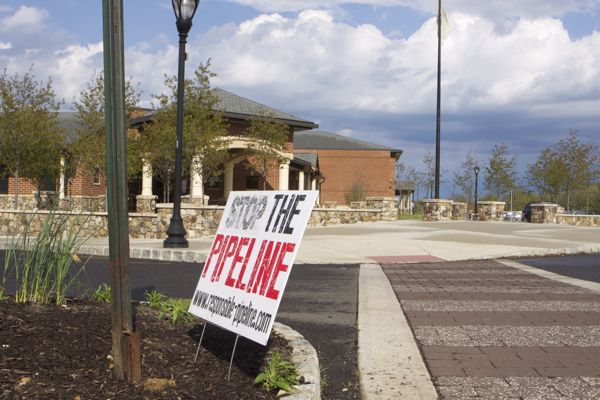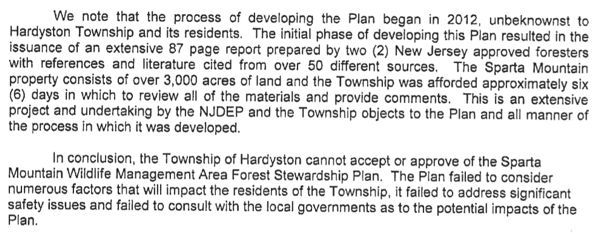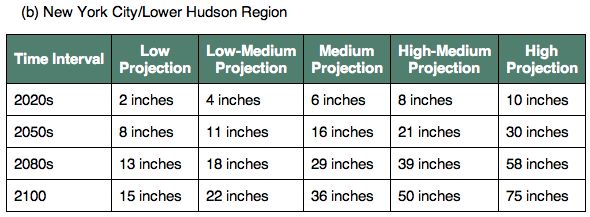Residents and Officials Demand That Christie DEP Deny Permits To Kill Controversial Pipeline
Tales From A Rigged Regulatory Regime – Chapter 13
Segments within Silos
Where’s Gov. Christie as NY’s Gov. Cuomo Kills Constitution Pipeline?
A large crowd packed the Chesterfield elementary school last night to demand that the Christie DEP deny a “dewatering” permit and kill the 28 mile “Southern Reliability Link” pipeline through the Pinelands and the compressor station in Chesterfield.
Many challenged DEP to follow the lead of NY Governor Cuomo’s Department of Environmental Conservation (DEC), who last friday denied a Clean Water Act Section 401 “Water Quality Certificate” that killed the massive proposed Constitution gas pipeline. Cuomo’s pipeline kill follows his ban on fracking in NY, huge wins for NY activists.
The elementary school location was the perfect institution and forum for the hearing – some brought their children or spoke passionately about intolerable risks to their kids – that illustrated the values of the community.
The turnout and testimony were impressive and signaled the Chesterfield – North Hanover – Bordentown community’s strong opposition, including local governments and State legislative leaders.
The community’s organized and rational opposition was a stark contrast to the absurdity of the DEP’s regulatory proceeding – a process I’ll call “segments within silos”.
Although the project has received other federal (FERC) and State (BPU) approvals, the Christie DEP could still kill the pipeline by denying required federal Clean Water Act approvals and State wetlands permits.
Despite the fact that Gov. Christie is a strong gas and pipeline supporter and his Energy Master Plan is driving the proliferation of gas pipelines and power plants across the State, activists must ramp up pressure on Governor Christie and his DEP Commissioner Bob Martin and demand that they enforce clean water laws.
Even in the likely event that DEP rubber stamps all the permits (dewatering, stream encroachment, and freshwater wetlands), a campaign targeted on DEP’s Clean Water Act WQ Certificate and permit powers will yield significant benefits.
First of all, that effort lays a foundation for administrative appeals of the permits at the Office of Administrative Law (OAL). This delays the finalization of permits.
Second, OAL decisions could then be challenged in court. In that regard, litigation has already been filed by PPA and Sierra Club.
Third, and perhaps strategically the most important, delays from appeals and litigation coupled with continued high profile public opposition could encourage the next round of candidates for Governor to pledge to exercise those powers and kill pipelines and fossil infrastructure, strengthen DEP regulations, and reverse the Christie Energy Master Plan in the next administration.
That’s exactly how we killed 15 proposed garbage incinerators and developed the nations most progressive State Solid Waste Plan and strongest recycling program under the Florio Administration in 1990.
I) DEP’s abdication of role as Trustee of Water Resources – segments within silos
DEP began the hearing on the wrong foot, by explicitly warning the public to limit comments to just the compressor station (not the pipeline and the entire project) and to just the dewatering permit aspects of the compressor station (as opposed to other pending DEP permits and the broad impacts of the entire project, including the effects of climate change).
That is a gross attempt to narrow the scope of the public’s concern to a tiny segment of the entire project and to one small DEP silo instead of the multiple DEP permits and regulatory responsibilities. That is the epitome of bureaucratic silo decision-making.
[adding absurdity and insult to injury, DEP limited speakers to just 3 minutes, monitored by an obnoxious huge traffic light – green, yellow, RED – manned by of all people, The State Geologist!]
The entire project is a massive $2 billion regional fossil infrastructure project. It begins with the fracking fields of Pennsylvania, the PennEast pipeline, the NJNG “Southern Reliability Link” pipeline, the SJG Pinelands pipeline and the BL England power plant!
I called out the absurdity of that abuse and noted that it conflicted with the DEP’s legal duty under the Water Supply Management Act to serve as Trustee for the State’s water resources and to enforce requirements under the dewatering permit regulations that the applicant (Transco) establish that the water diversion is in the public interest.
The law directs DEP to act as Trustee for the people of the state – who own water resources in common – not serve the private interests of an out of state corporation.
II) Next Steps
DEP extended the written public comment period on the dewatering permit until May 17, so get your cards and letters in to DEP. See this for comment info.
Next up is the freshwater wetlands permit, and that permit is key, because DEP will use it as the State’s Clean Water Act Section 401 Water Quality Certificate. In contrast to NY State DEC, who just used this certificate power, the DEP has what is known as a federally delegated wetlands program.
As a result of delegated status, DEP may be confused and legally vulnerable on this issue.
DEP’s freshwater wetlands permit rules conflate the State permit and the federal WQ certificate: (NJAC 7: 7A-2.1)
(d) A permit issued under this chapter shall constitute the water quality certificate required under the Federal Act at 33 U.S.C. §1341 for any activity covered by this chapter. If a discharge of dredged or fill material into waters of the United States, as defined at N.J.A.C. 7:7A-1.4, does not require a permit under this chapter but does require a water quality certificate, the Department shall use the standards and procedures in this chapter to determine whether to issue the water quality certificate, except in the New Jersey Coastal zone, as described at N.J.A.C.7:7E-1.2(b).
But the 401 certificate and a freshwater wetlands permit are two legally and technically distinct actions.
In addition, DEP’s wetlands rules: expressly prohibit project segmentation; require consideration of the ecological effects of disturbance and hydro-modification, including impacts from “Draining, ditching or otherwise causing the depletion of the existing groundwater or surface water so as to modify the existing vegetation, values or functions of the wetland“; and explicitly require compliance with NJ’s State Surface Water Quality Standards: (NJAC 7:7A-7.2)
(b) The Department shall issue an individual freshwater wetlands or open water fill permit only if the regulated activity: [1.-4.]
5. Will not cause or contribute to a violation of any applicable State water quality standard;
That provision can be used to force consideration of SWQS, including anti degradation policies (there are designated C1 and Pineland PL classified streams impacted); narrative and numeric criteria, and existing use protections.
Those interested in the power of C1 anti-degradation and “existing use” protections in NJ’s SWQS should Google and OPRA DEP’s revocation of a NJPDES discharge permit to Sydney Brook to serve a proposed development known as “Milligan Farms” in Clinton NJ.
[*Update: The Milligan Farms case turned on the NJ SWQS “existing use” protections for wood turtle (NJAC 7:9B – 1.5(a)6.) – which explains why the Corzine DEP later killed wood turtle protections – but not the SWQS requirement to protect “existing uses” which is a federal Clean Water Act mandate.]
Here is how NY State DEC resolved those water quality issues in denying a 401 WQ certificate: (strongly urge you to read the whole thing, it is a work of art!)
Constitution’s failure to adequately address these concerns limited the Department’s ability to assess the impacts and conclude that the Project will comply with water quality standards. Project construction would impact a total of 251 streams, 87 of which support trout or trout spawning. Cumulatively, construction would include disturbance to 3, 161 linear feet of streams resulting in a total of 5.09 acres of stream disturbance impacts. Furthermore, proposed Project construction would cumulatively impact 85.5 acres of freshwater wetlands and result in impacts to regulated wetland adjacent areas totaling 4, 768 feet for crossings, 9.70 acres for construction and 4.08 for acres for Project operation. Due to the large amount of new ROW construction, the Project would also directly impact almost 500 acres of valuable interior forest. Cumulatively, within such areas, as well as the ROW generally, impacts to both small and large streams from the construction and operation of the Project can be profound and could include loss of available water body habitat, changes in thermal conditions, increased erosion, and creation of stream instability and turbidity.
The wetlands rules have other restrictions we can emphasize and urge DEP to enforce – so activists must get up to speed on the wetlands permit issues similar to the great work on the dewatering permit.
III) Resist the Rigged Regulatory Regime
In the meantime, see if you can wrap your head around this (from theFERC NEPA Environmental Assessment)
“As indicated in table 8, Transco has proposed placing aboveground facilities, including Station 203, the electrical substation, and valve site, within wetlands. The FERC’s Procedures prohibit locating aboveground facilities in any wetland (Section VI.A.6) without further justification. To date, Transco’s proposed Station 203’s footprint does not totally avoid wetlands and Transco has not requested a modification from FERC’s Procedures. […]
Transco’s compliance with the FERC Plan and Procedures during construction, employing the wetland construction techniques specified in the Procedures, and adherence to the CSP would minimize impacts on wetlands. Following restoration, those portions of the modified agricultural wetland temporarily impacted and restored would be monitored in accordance with our Procedures and/or in accordance with protocols specified by the NJDEP (whichever is most restrictive). Based on Transco’s consultation with NJDEP, revegetation of temporarily impacted emergent wetlands is expected to be sufficient mitigation. The NJDEP would be consulted regarding forested wetlands and mitigation options for these permanent impacts, as necessary. (page 21, FERC Environmental Assessment)
What does this mean? Translation?
It means two things:
1) FERC’s “prohibition” on location in wetlands is meaningless; and
2) DEP made commitments to Transco and green lighted the project months ago during pre-application meetings and discussions with Transco, months before there was any public awareness or opportunity to weigh in.
More to follow.






